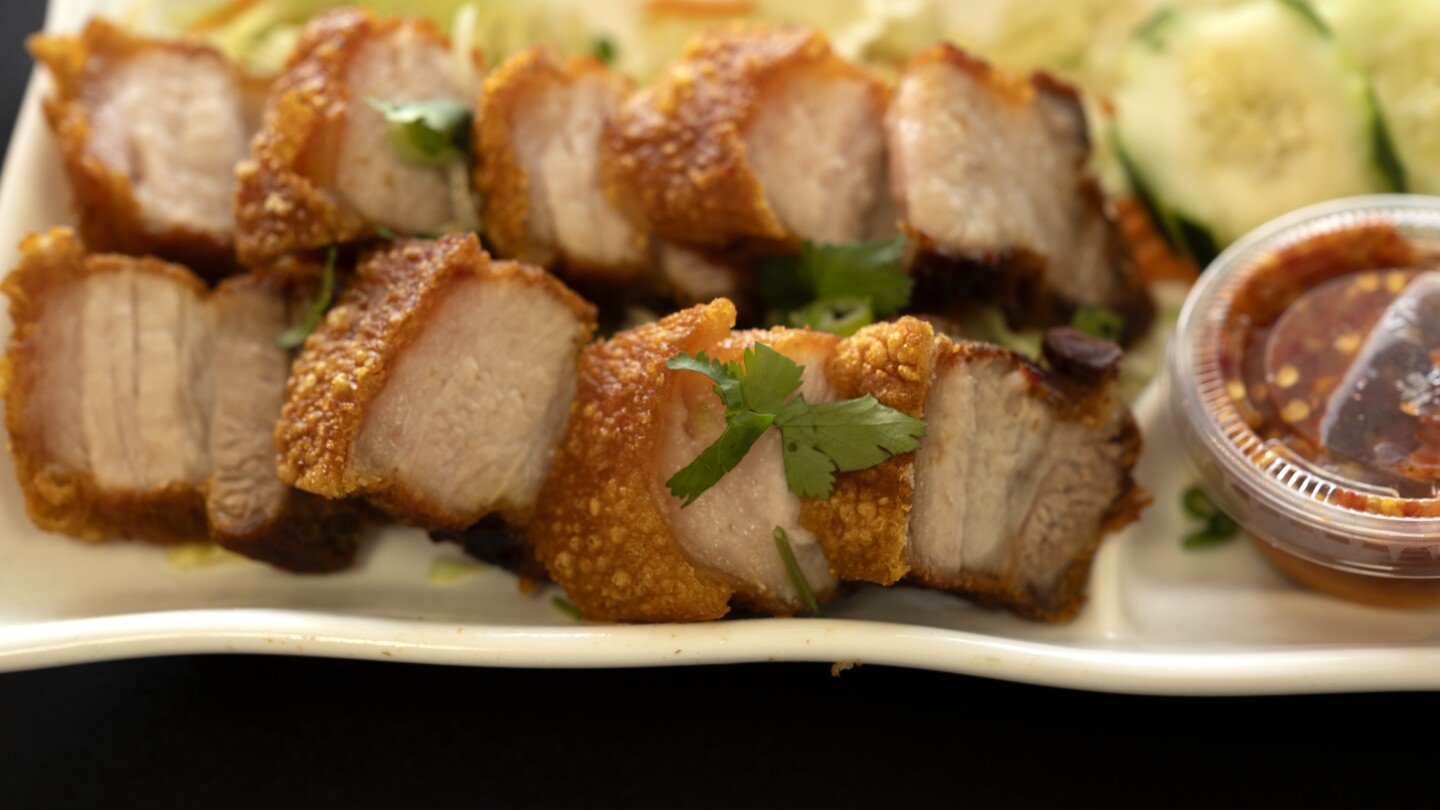- cross-posted to:
- news
- cross-posted to:
- news
It’s a practice that’s about as American as apple pie — accusing immigrant and minority communities of engaging in bizarre or disgusting behaviors when it comes to what and how they eat and drink, a kind of shorthand for saying they don’t belong.
The latest iteration came at Tuesday’s presidential debate, when former President Donald Trump spotlighted a false online tempest around the Haitian immigrant community of Springfield, Ohio. He repeated the groundless claim previously spread by his running mate, JD Vance, that the immigrants were stealing dogs and cats, the precious pets belonging to their American neighbors, and eating them. The furor got enough attention that officials had to step in to refute it, saying there was no credible evidence of any such thing.
But while it might be enough to turn your stomach, such food-based accusations are not new. Far from it.
Food-related scorn and insults were hurled at immigrant Chinese communities on the West Coast in the late 1800s as they started coming to the United States in larger numbers, and in later decades spread to other Asian and Pacific Islander communities like Thai or Vietnamese. As recently as last year, a Thai restaurant in California was hit with the stereotype, which caused such an outpouring of undeserved vitriolthat the owner had to close and move to another location.



“Noted first in the 14th century, apple pie recipes are a standard part of cuisines in many countries where apples grow.”
https://en.wikipedia.org/wiki/Apple_pie
What kinds of food can 100% be attributed to the US? Fast food? Spray cheese?
It’s so silly when people act like the US has zero culture.
The modern hamburger is widely considered to have been popularized in the U.S. in the late 19th or early 20th century.
Source: https://www.smithsonianmag.com/arts-culture/uncovering-the-history-of-the-hamburger-81593708/
Hot dogs, or frankfurters, were popularized in the U.S., particularly at baseball games, with the modern version emerging here.
Source: https://www.nytimes.com/2021/07/01/dining/hot-dogs-america.html
Buffalo wings were invented at the Anchor Bar in Buffalo, New York, in 1964.
Source: https://buffalonews.com/news/local/history/the-legend-of-buffalo-wings-is-tied-to-this-buffalo-bar/article_bf1c5bb2-8302-11ec-8df5-f3dd1f208de0.html
The boxed version of macaroni and cheese was popularized in the U.S., particularly by Kraft.
Source: https://www.history.com/news/a-history-of-macaroni-and-cheese
Modern peanut butter was developed in the U.S. by several inventors, including Dr. John Harvey Kellogg.
Source: https://www.nationalpeanutboard.org/news/how-did-george-washington-carver-invent-peanut-butter.htm
Cornbread has roots in Native American cuisine and was developed further in the U.S., especially in Southern cooking.
Source: https://www.foodnetwork.com/recipes/articles/history-of-cornbread
The Cobb salad was invented at the Brown Derby restaurant in Hollywood, California, in the 1930s.
Source: https://www.latimes.com/archives/la-xpm-2006-apr-12-fo-cobb12-story.html
Chocolate chip cookies were invented by Ruth Wakefield at the Toll House Inn in Whitman, Massachusetts, in 1938.
Source: https://www.npr.org/sections/thesalt/2013/11/13/244089630/sweet-surrender-the-history-of-the-chocolate-chip-cookie
American-style barbecue originated in the U.S., with distinct regional varieties such as Texas, Carolina, and Kansas City BBQ.
Source: https://www.southernliving.com/bbq/origin-history-american-barbecue
Jell-O was invented in 1897 by Pearle Bixby Wait in LeRoy, New York.
Source: https://www.jellogallery.org/jell-o-history.html
These URLs link directly to each source where you can explore more about these iconic American foods.
I can’t tell if you’re joking or not.
None, but the notion of any “pure” and “original” cuisine existing is a myth that normalizes nativism.
So all the dishes that definitively originate from a certain place … actually don’t?
Every cuisine except for those of uncontacted tribes is shaped by migration, trade, economics, etc. The ingredients Italian cuisine is most known for are pasta (derived from early Arabic forms of noodles) and tomatoes (South America.) You can say Lasagna was invented in Italy, but you can’t say it’s the product of cultural purity that Europeans tend to think of their cuisines as.
Only to the degree that the hamburger actually is an original American dish does “pure” cuisine exist. People looking to discredit American food call it German, and while it evolved from Hamburg steak, by most accounts the first people to turn that into a sandwich, and then top it with cheese, lettuce, and tomato instead of gravy were in the United States. Burgers are German only to the degree that Bahn Mi is French.
Bahn Mis are the best sandwiches on earth.
We French might have invented the baguette but the vietmamese truly put it to good use.
Individual dishes can often be traced to a certain place and time though. You’re being overly general in your thinking.
I forget that the US exists outside time and space. As long as 90% of Europe has some prized tomato-based dish, I will laugh at the ideas of foods having a “place”.
Food is a cornerstone of culture and one thing that will always be true is that culture is an ever changing landscape rather than some strict index thats easily sorted.
I’ve no idea what this means.
Weird. Just because largely generic dishes exist that doesn’t negate that some others have a definitive origin.
OK. That doesn’t contradict what I was saying though.